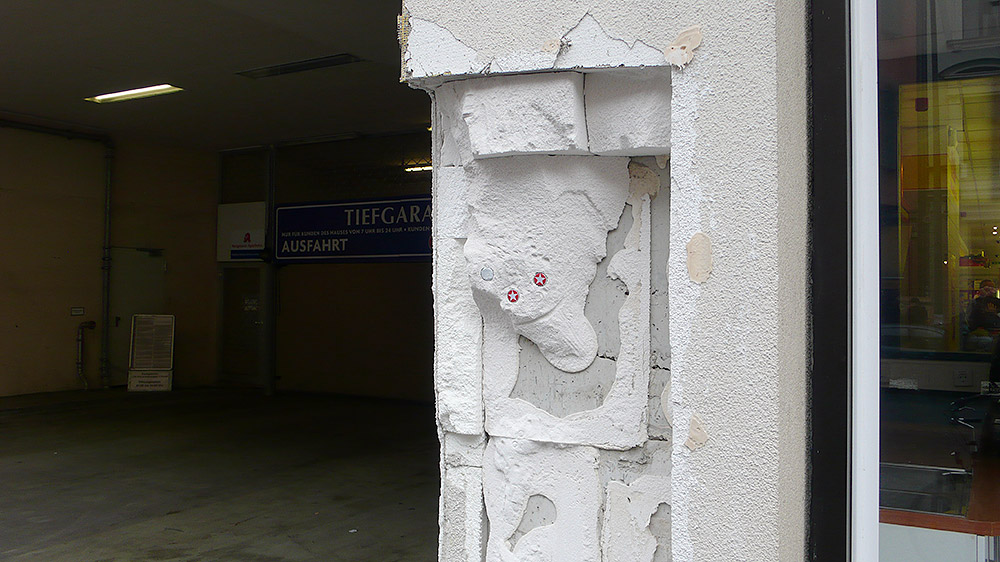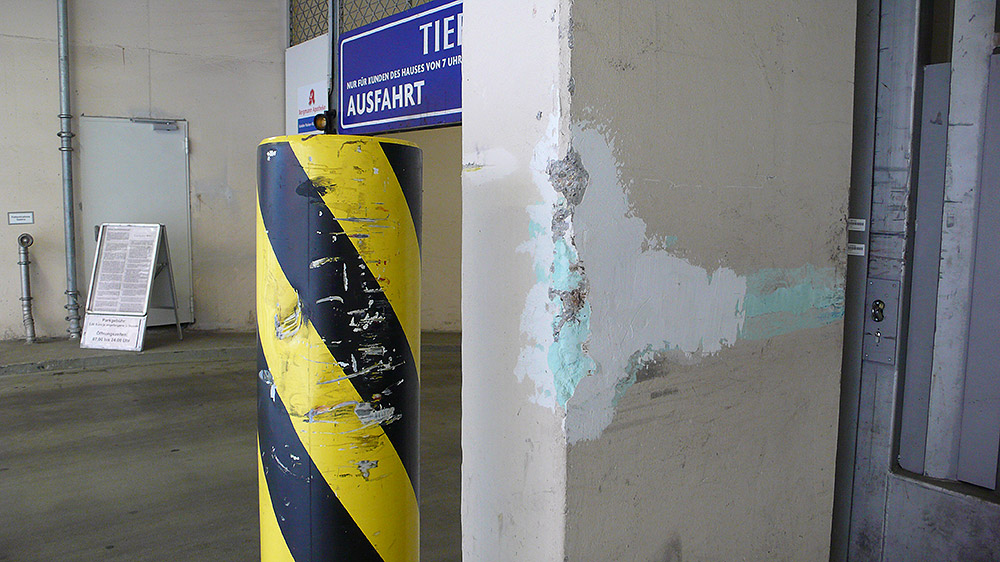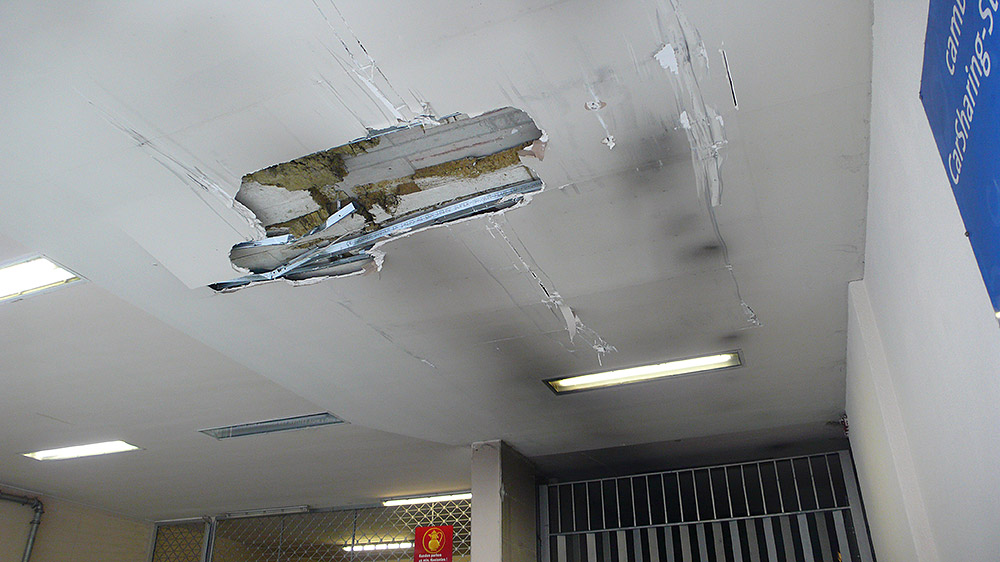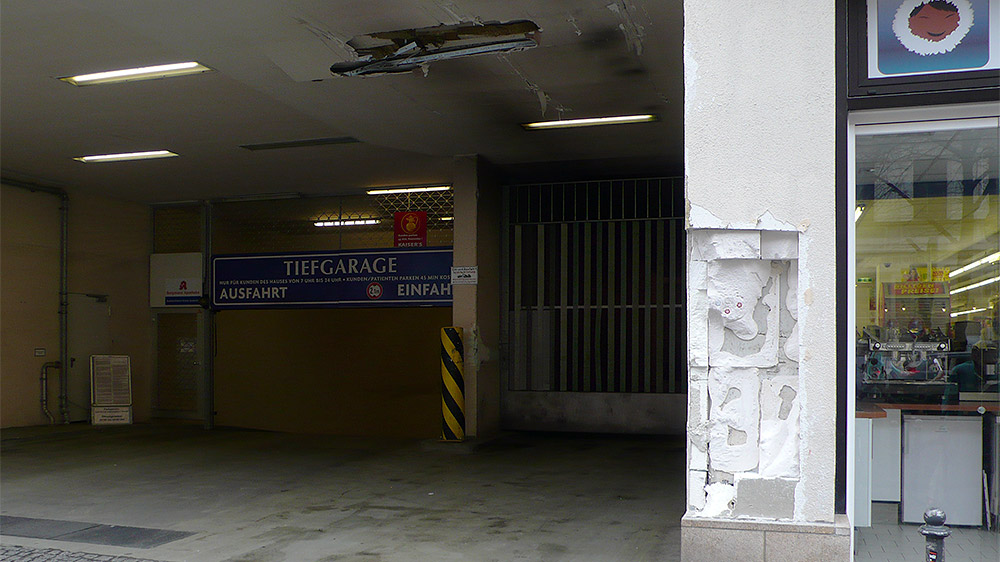Modern Façades Today, Now #007
How to extract the “good” from the goods? The goods are, in their very essence, “good”. The Old High German “guot”, meaning favourable – that which is virtuous and desirable – seems bound to the saleable commodity by virtue of etymological lineage. We can retreat further, to the proto-Germanic “gōdaz”, itself related to the strong verb “gadaną”, which in turn stems from the proto-Indo-European “gʰedʰ”, meaning, “to gather, to unite”.
This entrance to a subterranean loading bay behind two local supermarkets represents the point at which gathered and united goods are broken into lots for consumption at point-of-sale. Difficulties at this crucial point of transition are rendered legible by modern construction materials, and highlighted by multiple layers of repair.
Successive attempts by goods vehicles to penetrate the market have resulted in scars of various kinds: the dint and gash at the initial corner, the chafing at the bollard and door-frame, the grazing and sooting of the ceiling.
The architectural body, bloated by a layer of functional/decorative Polystyrol blubber, has tightened its orifice in an act of defiance. The point of ingestion seems to find the regular feeding repellant. The procession of deep-frozen pizzas, of processed, pre-portioned microwavable ready-meals and sugar-based soft drinks has neither the virtue nor the desirability promised by the good of the goods. The etymological lineage breaks down at the gates to the market, traditionally, too, a place of judgement, justice and control.



